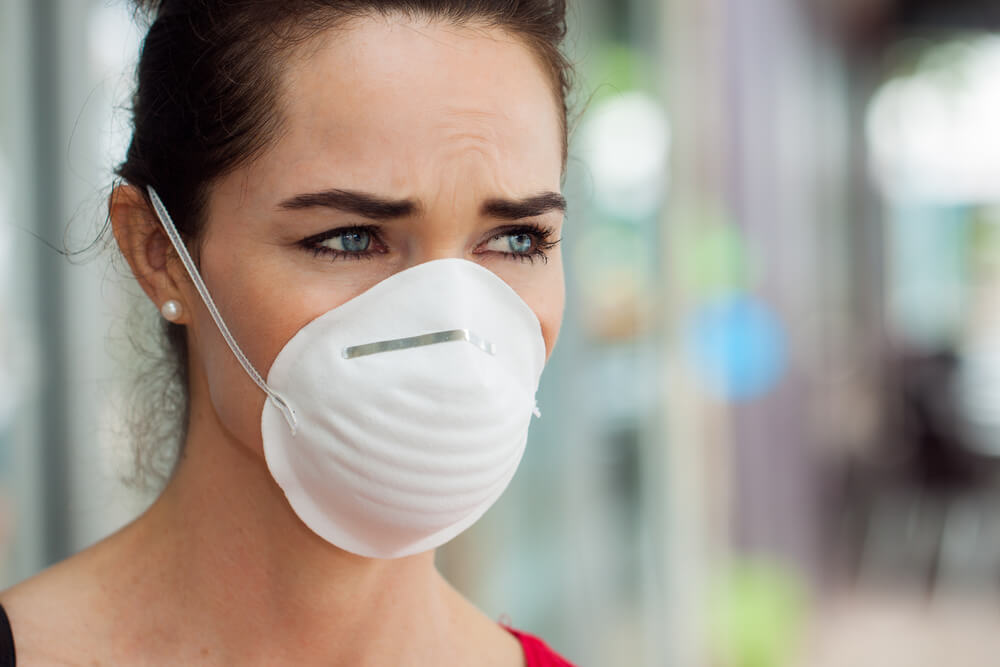California residents face deadly valley fever
Most people infected with the potentially fatal disease, valley fever, are unaware of the disease, so it is impossible to estimate the exact number of such people. An insidious fungal infection is attacking California and doesn't seem to be stopping.

Фото: Depositphotos
Victor Gutierrez contracted valley fever, caused by a soil fungus, around the summer of 2011 while working in nectarine orchards in California's dry, dusty Central Valley. According to the man, while working, a strong wind rose - such that people literally “fell down the stairs,” he writes NBC News.
When the workers were leaving the vineyards, only their eyes were visible on their bodies, and at home, taking a shower, one could see the layers of dirty soil covering the body being washed away. At the end of that summer, Gutierrez started having flu-like symptoms: cough, night sweats, exhaustion, and a strange feeling that he was burning from the inside. The father of three children ignored these feelings, being afraid of losing his job, and continued to work. But when every breath began to be given to him with difficulty, the man went to the doctor.
He was prescribed an antibiotic and a humidifier, but within 33 hours Gutierrez's lungs filled with fluid. He felt so bad that he went to a clinic where he was tested positive for valley fever. The man was 6 years old and had never heard of this disease. Doctors promised him a maximum of XNUMX months to live.
Although Gutierrez was able to cope with the disease, taking antifungal drugs for more than a year, he saw how valley fever kills his acquaintances. Of the five people who then fell ill, he survived alone. Valley fever remains asleep in his body and may return at any time. Gutierrez suffers from regular pain in the lungs, and if he gets cold, he lies in bed for weeks.
Coccidioidomycosis, the fungus that causes valley fever, thrives in dry, undisturbed soil. It gets into the air when that soil is disturbed—whether by bicycles, construction crews or farmers planting new orchards. The fungus can travel up to 75 miles (120 km) in the wind. Years of drought caused by climate change and a 240% increase in dust storms have led to a rapid increase in the number of people diagnosed.
According to the California State Department of Health, the number of new cases in the state increased by 10% between 2017 and 2018 year, which is likely to lead to significant costs for the state. In 2018, California allocated 8 millions of dollars to research the disease, and about 3 millions will go to expanding the Valley Fever Institute at Kern Medical Hospital. Three new laws concern reporting, testing, and statewide training. In 2011, California spent approximately 2,2 a billion dollars on the treatment of fever in hospitals.
On the subject: Despite a serious illness, 13-year-old athlete from Russia conquers California
Mistakes in diagnosis and dependence on race
New cases are especially concentrated in the San Joaquin Valley, where there are farms that produce two thirds of the country's fruits and nuts and one third of its vegetables. The region also has two cities with the most severe pollution in the United States and most farm workers in the state.
In 2017, the Centers for Disease Control and Prevention reported that 14 364 cases of valley fever were recorded nationwide, but "it is likely that tens of thousands of other cases are encountered and may be incorrectly diagnosed, since many patients are not tested for valley fever." Each year from 1999 to 2016 in the USA, approximately 200 deaths associated with this disease are recorded.
Dr. Royce Johnson, director of the Valley Fever Institute and professor of medicine at UCLA, said 60% of fever cases are misinterpreted as the flu. The remaining 40% experience symptoms that are often confused with a serious case of pneumonia. From there, in a small percentage—about 1% of those infected—the disease spreads to other parts of the body, including the brain and skin.
"People with a relatively uncomplicated fever usually think it's the worst illness they've ever had," Johnson said, adding that symptoms can get significantly worse.

Фото: Depositphotos
Patients are treated from 3 to 12 months, and then observed for an additional two years to ensure that the disease does not return and does not spread.
According to Stephen McKerdy, a professor at the Department of Epidemiology and Preventive Medicine, infection is not transmitted from person to person, but epidemiologists are still trying to determine what puts people at risk, in addition to external factors.
Immune function is one of the key factors: the risk is higher in pregnant women, some diabetics, people with HIV, the elderly, and those taking immunosuppressants or undergoing organ transplantation.
On the subject: A cancer-related pesticide found in almost every product in the US
McCurdy said race also matters: “It seems that dark-skinned people are more prone to serious forms of valley fever. In most cases, people recover (as with typical flu). People with darker skin seem less able to do it. ”
It's not entirely clear why this is so. The expert suggests a connection with genetic features.
Gutierrez was shocked by the cost of antifungal drugs needed to treat valley fever. At the height of the disease, it cost 1200 dollars for two months of taking pills, because he had to take two to three times more than if they were treating a typical fungal infection.
At that time he did not have insurance, and his family often had to choose between food and medicine. He still cannot work regularly, and his family mostly survives on the money that his wife earns in the fields.
Isabel Arrollo-Toland knows all about it. She is the daughter of a former farm worker and runs a small non-profit organization. She was diagnosed with valley fever in the 2007 year and again in the 2008 year when she spread to her skin. Both times a woman has not received a correct diagnosis for months.
In 2012, she was told her kidneys were failing due to exposure to both valley fever and the medications she was using to treat it. Since then, she has had to undergo dialysis for 10 hours every night. The woman is now on the transplant list.
On the subject: "No one expected it to be so fast": how climate change is destroying US cities
It only gets worse
Rates change, partly because rainfall in the southwest has become less predictable. According to Antje Lauer, a microbiologist-ecologist from California State University of Bakersfield, very wet winters, like this winter, and then dry summers promote fungal growth.
“The valley fever fungus may expand its territory with climate change,” Lauer said, pointing to the fact that coccus spores were discovered in Washington state in 2014.
Although farm workers and other people working on the street are in a particularly vulnerable position, Lauer added that in order for any other person to get sick, one exposure to the fungus is enough. Dust masks partially protect against this, but they do not help those who work in the field. As a rule, they do not give any masks at all and do not warn about risks.

Фото: Depositphotos
Two vaccines against the fungus are in the works, at the University of Texas and the University of Arizona, but it is unclear how close the research is to testing in humans. Three members of Congress from the Southwest introduced a federal bill last month to increase public awareness of the disease while "promoting the development of new treatments and vaccinations."
Mario Zelaya, a medical assistant from Mexico, visited 23 for years at the Vida Sana clinic in Lindsay, California. In recent years, he has witnessed an increase in the incidence of valley fever and now heals three to four people every week. The bulk of his patients are agricultural workers and their families.
Zelaya said a timely diagnosis can make a difference in how severely the disease affects a person. Because the blood test requires a two-week "window" for reliability, results are often false negative.
"Patients need to know that if they don't get better in two or three weeks, they need to come back and recheck because that could be a very bad sign," he said.
Read also on ForumDaily:
"No one expected it to be so fast": how climate change is destroying US cities
Another US state legalized euthanasia: there are already eight such countries
Subscribe to ForumDaily on Google NewsDo you want more important and interesting news about life in the USA and immigration to America? — support us donate! Also subscribe to our page Facebook. Select the “Priority in display” option and read us first. Also, don't forget to subscribe to our РєР ° РЅР ° Р »РІ Telegram and Instagram- there is a lot of interesting things there. And join thousands of readers ForumDaily New York — there you will find a lot of interesting and positive information about life in the metropolis.











